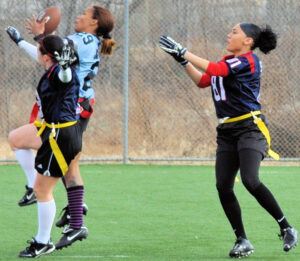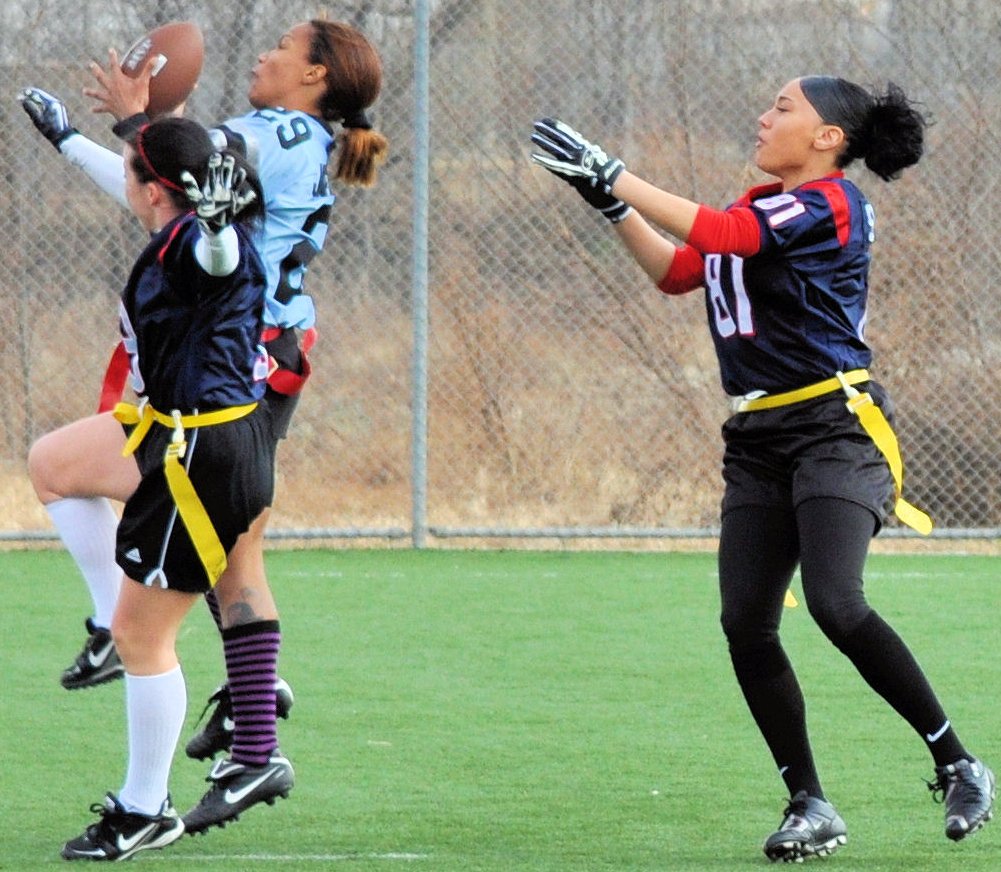By Gavin Leonard

UJW (WASHINGTON) – Women’s basketball and soccer have amassed a large audience over the last few years, with their respective sports being broadcast to the nation on major networks. Now, women’s flag football is looking to rise.
“It’s a sport that you don’t see much or hear much about, especially for women. Men, I see it more, but women not at all,” said Howard University student Kerrington Wells.
Wells added that she had not seen any advertisements for women’s flag football, nor is there a team at the university.
This is due to women’s low participation in sports compared to men, according to the Women’s Sports Foundation. By the age of 14, girls drop out of sports at twice the rate of boys, and 40% of teen girls are not actively participating in sports.
Recently, there has been more visibility and participation in women’s flag football. According to the National Federation of State High School Associations (NFHS), in 2021 there were 15,716 girls participating, which increased nearly 200% in three years to 42,955. Diana Flores, a quarterback and captain of the Mexican national women’s flag football team, has been an advocate for the sport. She was seen in the NFL’s “Run With It” commercial during Super Bowl LVII, which aired on Fox in 2023 and went viral across social media.
Despite the challenges to keep girls and women retained in sports, there are still many who have a passion for football and recognize the value of being active on a team.
Jo Cornish,50, believes that women’s flag football is a great option. She played football with other boys as a child and would have appreciated an opportunity to play recreationally. She loves watching the NFL as a Washington Commanders and Baltimore Ravens fan. Cornish is one of many women across the country who loves football and enjoys playing it.
Women’s flag football first hit the sports scene in 1971, when the Northeast Women’s Football League (NEWFL), the first organized league of women’s flag football players, was formed. The league was started by Frank Storck. A woman approached him asking to start a league. They started with six teams and have grown to 28 teams with three separate divisions/ levels of skill. Since then, there has been much progress made in the sport.
Women’s flag football became more accessible after colleges and recreational leagues were created across the nation. The Atlantic East Conference became the first NCAA conference to officially sponsor the sport in the spring 2025 season. Many intercollegiate, junior college, and NCAA teams have launched programs and formed partnerships with organizations like the NFL’s Minnesota Vikings. In 2021, Nike and the NFL announced their commitment to donate $5 million for high school athletic programs to start their flag football teams. The NFL also has its own NFL Flag leagues.
Carl Einrich, founder of Flagstar Football, with leagues across Washington D.C., Maryland, and Virginia, began girls’ flag football clinics in the spring of 2021 and began their league following year.
“We’re just here as a system for kids to get active, be on a team, and enjoy themselves,” Einrich said.
The organization is aware of the rise in women’s flag football programs in schools but clarifies that their intent is not to prepare these girls to play flag football, but instead to provide them an opportunity to gain values like teamwork, leadership, and being in good health.
“Those things are motivators for kids to come out and play, that’s awesome, but it’s not like our expressed intent is breeding all-American flag football players,” he said.
Flagstar Football, as well as many other women’s flag football programs across the country such as i9 Sports for national audiences, Gold Crown Foundation in Colorado, and GirlPower Flag in Florida, are driving the growth of the sport and women’s sports as a whole.
With the 2028 Summer Olympics introducing the sport of flag football, there will be lots of eyes on the game and an opportunity for sports fans to see what it’s about.



